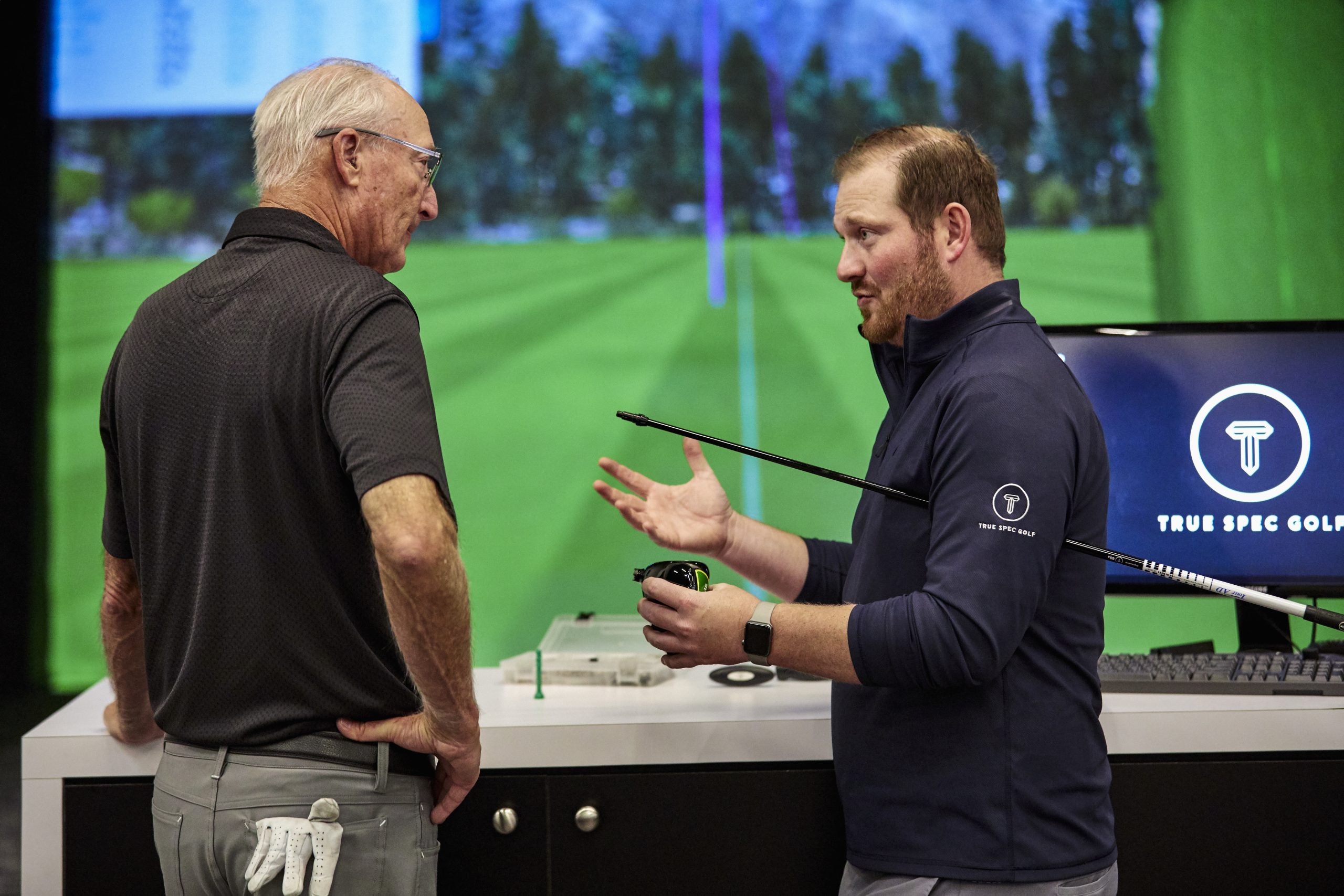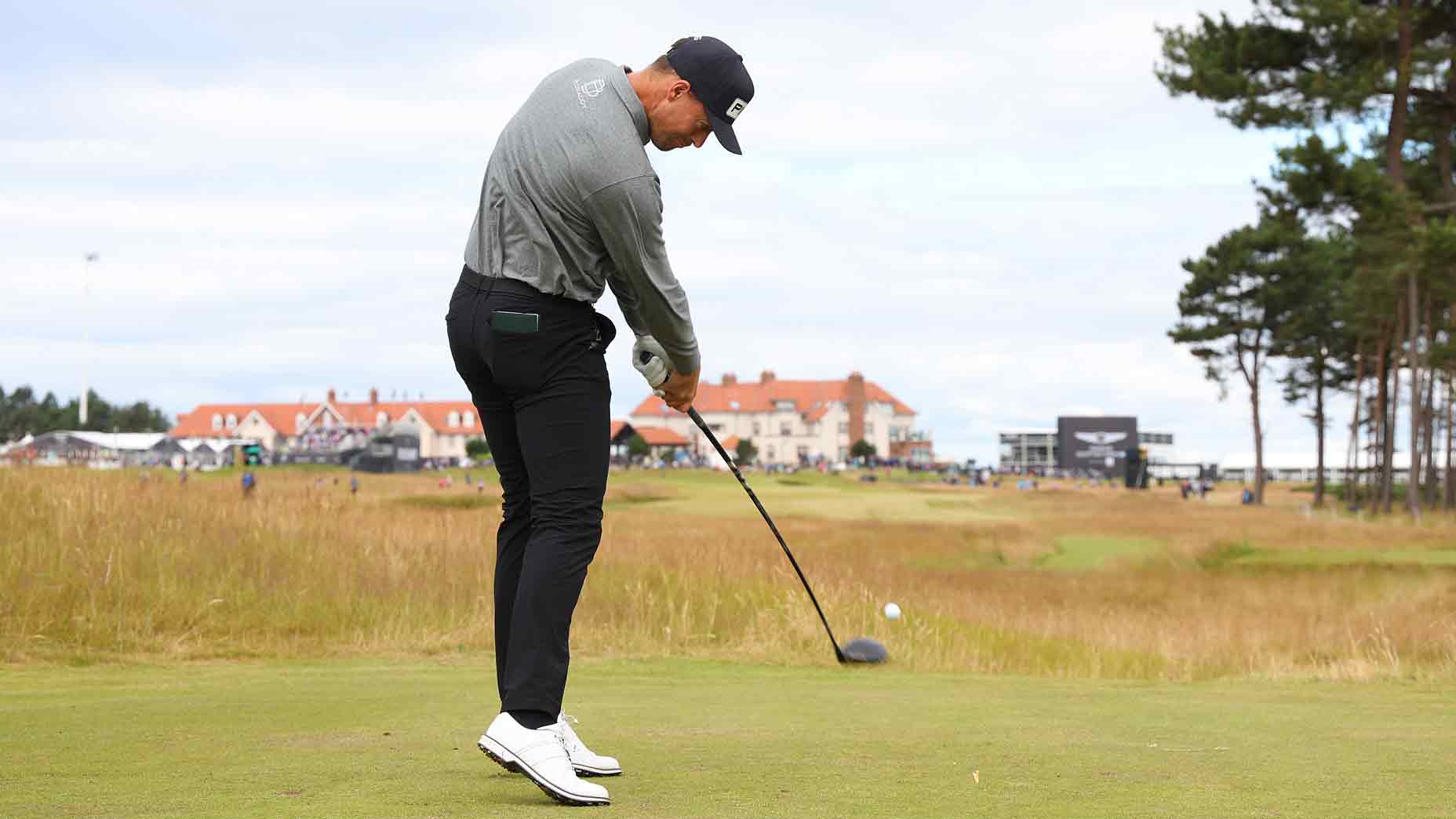Starting a hole with a good tee shot just makes the rest of that hole much easier and less stressful — since you don’t need to spend time looking in the woods or the rough for your ball.
While it isn’t a must to hit every single fairway, it’s certainly helpful when you do.
Unfortunately, hitting good tee shots isn’t the easiest thing for many amateur players, which is why I offer up 10 things you must do in order to start seeing better results. By practicing the below, you’ll be on your way towards better tee shots in no time.
Improve your tee shots by doing these 10 things

True Spec Fitting
1. Solid contact – focus on posture
Center-face contact is a huge influence in producing perfect tee shots. There are lots of factors for getting that center-face contact you want, but one of the biggest is having great golf posture — which means having your arms hang with your hands below your shoulders.
Based upon your contact point, I always suggest making some adjustments. So if you’re hitting more off the toe, try moving a step closer to the ball. If you’re hitting the heel, it can be helpful to back up a bit.
2. Ball position
Having the right ball position for your driver will help maximize distance. So where should the ball be at address? Always make sure it’s more forward and towards your lead foot, which can be customized based upon your preferred ball flight.
If you want a flight that’s higher, keep the ball teed up forward in your stance. For a lower-flighted shot, consider moving the ball position back a bit more. Utilizing different trajectories can help you deal with weather conditions and course layouts.
3. Use tilt
To maximize your driver distance, always be sure to tilt your shoulders to reflect the ball position. So when the ball is teed up more towards the lead foot, your lead shoulder should be higher and your trail shoulder should be lower. This helps you swing up on the ball, giving you a better chance of launching it.
Understanding how this angle of attack helps your tee shots is important, which is why having a launch monitor can be helpful for you to review your numbers.
4. Swing path
Having a consistent swing path is important with any club, but it’s even more critical when using a driver. That’s because a swing that’s too out-to-in will produce pulls and slices, while an in-to-out path tends to produce pushes and hooks — which can wreck a hole if either is too extreme.
I personally like using alignment sticks or padded rods to help improve the swing path, which can be great tools to help validate your path.
5. Speed
Once you’ve got a good understanding of how to make good contact, you can now focus on incorporating some more speed into your swing.
If you really want to maximize your driver, you’ll need to be willing to swing a little faster than you typically do. But make sure you control that speed by maintaining good sequencing, and that your angle of attack is still solid.
6. Use a driver that fits
Thanks to new technology, it’s important to invest in your equipment in order to fit your golfer profile. So test different shafts and try different driver lofts to see what works best for your game. In my experience, there’s nowhere better than True Spec Golf to get expert-level fitting. (GOLF.com and True Spec Golf are affiliates of 8AM Golf.)
7. Your practice swing shouldn’t hit the ground
If you’re hitting the ground during the practice swing, step back, reset yourself, and try again, making sure you hear a “swoosh” just above the ground where your ball would be teed up.
Ideally, by tilting your shoulders, you’ll add speed and keep the swing from getting too steep.
8. Try The Stack System
As I mentioned before, learning to swing faster takes training, because you need to stay in control when adding more speed. To do this properly, I suggest using The Stack System, which has built-in speed training programs meant to teach you how to do it the right way.
9. Try this easy sequencing drill
A great sequencing drill is to start with your feet together, then making your backswing. As you’re in the backswing, take a step forward with your lead foot and use your momentum to add speed. This drill can also be great to improve your contact and help with the proper delivery.
10. Avoid the dreaded pop-up
Contrary to what most golfers think, a popped-up tee shot isn’t due to the ball being teed up too high. Instead, it’s likely due to it being teed too low, which forces you to swing down — which increases the chance of a pop-up. Much of this is caused by having a poor setup and not having the right ball position (towards the front foot), which prohibits the shoulders from being tilted enough.
So how can you prevent a popped-up drive? Make sure you’re swinging with enough speed to keep the club from hitting the ground, which will also help the angle of attack so not to lose lots of distance.

PING G430 SFT Custom Driver
View Product












